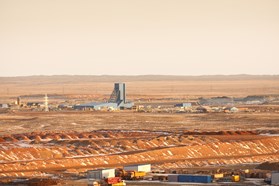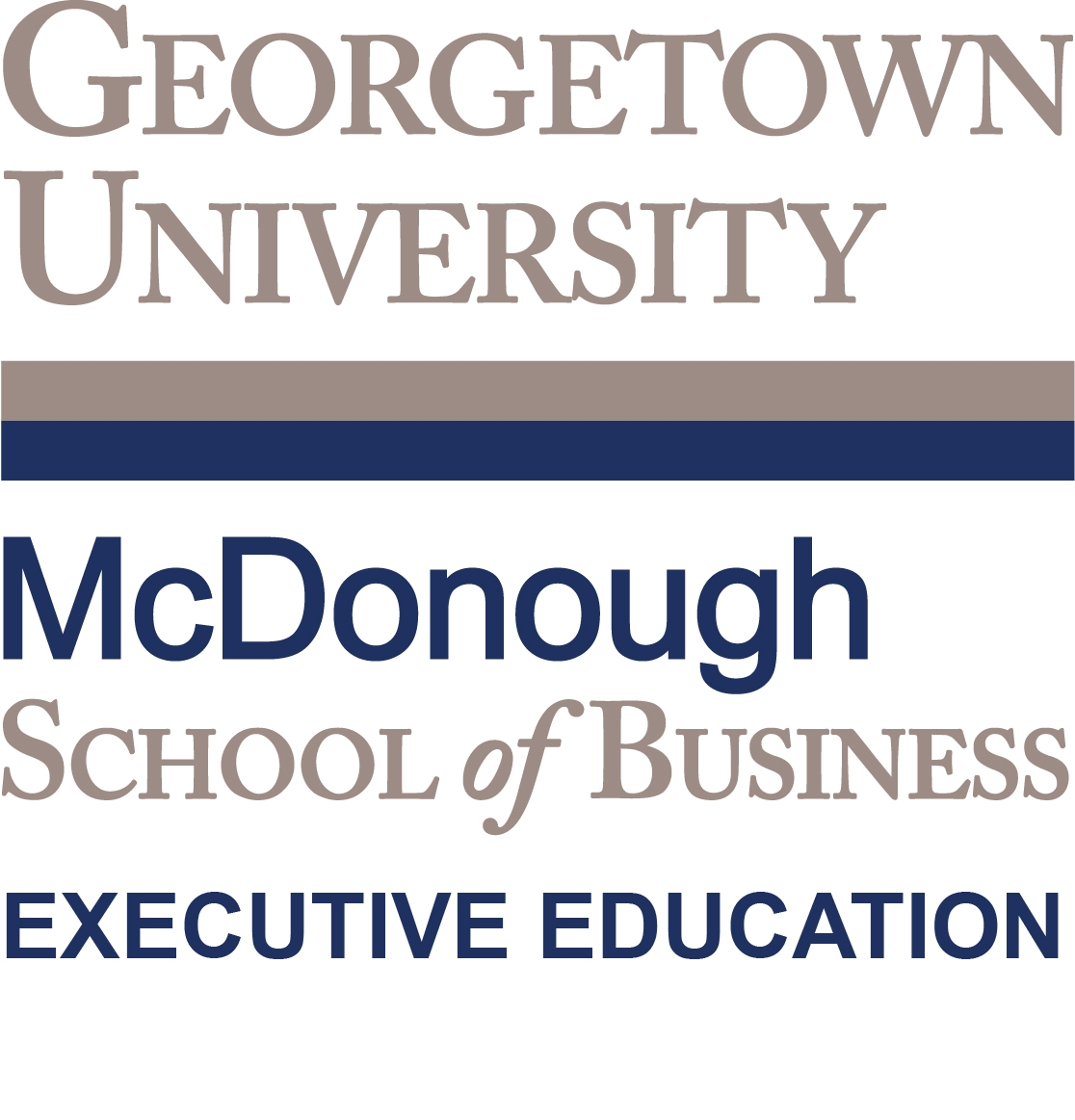- Organizational
Engaging Stakeholders Globally
Georgetown McDonough and Rio Tinto’s Stakeholder Engagement Academy
Before you can move mineral resources, you have to dig them up first. That is simple enough. Yet, the resulting engineering, social and environmental complications of this simple truth are anything but straightforward. So how do metals and mining companies extract resources without cutting the ground out from other stakeholders and straining long term relationships? How do they successfully balance participation in a global operation, framed by a central corporate strategy, with realities on (and then under) the ground?
These are the issues that Rio Tinto Group, a British-Australian multinational metals and mining corporation headquartered in London, face every day. Founded in 1873, the company began as a multinational consortium of investors who purchased a mine complex on the Rio Tinto river in Huelva Province in Spain. Through subsequent mergers and acquisitions, the company is now preeminent among the world leaders in the production of many commodities including aluminium, iron ore, copper, uranium, coal, and diamonds.
Just as the extraction of hydrocarbons transformed the bottom line and sky lines of Middle Eastern economies, so too investment by mining companies has the potential to transform the emerging economies and regions in which Rio Tinto operates. More than $6 billion has been spent on Oyu Tolgoi, a copper-gold mine in Mongolia. The site of the biggest foreign-investment project in the country, the mine has the potential to become one of the top five copper mines in the Rio Tinto owns and operates a substantial piece of the project. When Rio Tinto began the project, stakeholders were told to expect the mine to be around for a long time, perhaps upwards of 50 years.
With such massive investment at stake and such long timescales coming as standard, it is not difficult to identify ways in which the project itself might be affected, for both good and bad, by those it affects.

The Oyu Tolgoi mine in Mongolia
Since impact on communities and the environment is a certainty, it matters that Rio Tinto’s executives are both managerially adaptable yet morally constant so as to minimise risk in all its forms. To this end Rio Tinto has teamed up with the Executive Education Program at Georgetown University’s McDonough School of Business in Washington, D.C. The school partners with Rio Tinto in its Stakeholder Engagement Academy, itself part of Rio Tinto College, the company’s corporate university. The Stakeholder Engagement Academy’s objective is to professionalise stakeholder engagement capability and capacity drive innovation in stakeholder engagement tools and systems across the company.
Georgetown McDonough sits at the intersection of business and policy in the United States and around the world. The best custom programs all weave the finest academic thinking into practical materials which are then tailored to specific organizational demands. Truly exceptional programs are able to change minds as well as methods. Perhaps the most important aspect of the Stakeholder Engagement Academy is that it puts employees in the shoes of those on the other side of the negotiating table, the supporting characters who populate the corporate drama from landowners to community members to senior government officials.
Dr. Brooks Holtom, the academic director for Rio Tinto’s collaboration with the McDonough School of Business, is an accountant by training with a PhD in Management and extensive experience teaching international negotiations classes (Executive MBA, MBA) as well as core management.
“In both settings, I stress the importance of quantifying everything you can… so as to improve the odds of persuading decision makers. This builds on my background as an accountant and the understanding that the language of corporate leadership is often quantitative or financial. I think this has served us well in building this course where the goal is to persuade engineers, accountants and other quantitative analysts of the importance of ‘softer’ skills and capabilities.”
Role-playing is a large part of what goes on during the residential, four-day program. Thus a group of managers can find themselves acting out the role of indigenous community members during sessions in which executives might also be asked to voice the concerns of human rights activists or NGO workers. For the 830 individuals who have been through the program since 2012 (in cohorts of 20-35), it is a playful entry into a very serious point.
As Holtom points out: “Absent a disaster, the quickest way for a company to lose trust is to promise one thing and then do another. Sometimes this happens because someone acts unethically. But it also can happen even when the parties have good intentions but fail to communicate. For example when two parts of a large organization attempt to do the ‘right’ thing but they are actually at odds.”
Trust is a universal language, and while its dialects may be distinct, varying from one local market or business culture to another, a foundation of trust remains critical in an industry prone to discord. Holtom and his team are just as meticulous building the economic case for trust as they are lively in establishing the moral arguments for it. Their case rests on preventing the blockades and protests that can occur when discord is at fever pitch; the importance of establishing credibility with authorities in new markets and jurisdictions; reducing the costs of litigation; lowering the insurance risk; outperforming competitors; and avoiding messy environmental or social problems.
Having established the destination, a place in which stakeholder engagement is an essential article of faith rather than a peripheral afterthought, the course runs along traditional academic tracks. As Paul Lambert, Assistant Dean for Custom and Open Enrolment Programs at Georgetown McDonough, explains, “The case studies and course sessions are designed with actual Rio Tinto data, experiences, and desired outcomes. While understanding global market trends, given local policy and regulatory environments, as well as how to engage with global and local stakeholders are critical to Rio Tinto and the larger mining sector, such principles of stakeholder engagement also are universal and applicable to any global enterprise.”
Lambert continues, “Generally speaking, it is critical for an educator to help participants step outside of their given mindsets and paradigms in order to see things differently and discover new skills and abilities. Related to that, it also is critical to challenge and push participants on their given assumptions and biases.”
The biggest paradigm shift for participants in the Stakeholder Engagement Academy is from the notion that their role is simply defined as securing the best deal for the company. Instead they are prompted to look at the case studies through the lens of Pareto optimization, in which improvements can be made to at least one negotiating party's well-being without reducing any other party's well-being, whilst still securing the best outcome for the company.
By establishing the academic methodology for creating win-win situations, the course designers are helping participants imagine how benefits can be maximized for everyone as part of a forward thinking, long-term engagement process. It is perhaps the most important take away from the program.
Such longer-term thinking is essential if companies such as Rio Tinto are to play a role in ending the so-called ‘resource curse’. Also known as the ‘paradox of plenty’, the resource curse occurs in countries and regions with both an abundance of natural resources and less economic growth and worse development outcomes than places with fewer natural resources. For executives transitioning from life in developed nations to work in emerging economies, confronting the challenge of the resource curse will not only make them better executives, but perhaps better, more compassionate human beings. But can such empathy be taught or learnt?
Brooks Holtom thinks it can. “Through our case studies and associated videos, we develop a conversation that helps participants put themselves in the shoes of others (stakeholders). We help them to gain an understanding and appreciation for the challenges others face, their aspirations, and their values. We have not measured pre- and post-session empathy, but I have observed many participants leaving with a wider perspective on the challenges of diverse stakeholders and at very least some sympathy. Because I am an educator, I am a dealer in hope and so to answer the question more directly, yes I do think that empathy can be learned.”
Understanding is a two-way street. While there always will be more that executives can do to comprehend the point of view of the negotiating counterpart, there is an equivalent responsibility to upskill and inform those negotiating on behalf of affected communities. Holtom provides as an example the over-emphasis some governments give to the employment opportunities created during the construction phase of a mine. Local communities, he says, are bound to feel disengaged and resentful if their incomes, having risen during the building boom, fall sharply after a facility comes online. With its double grounding in theory and practise, the Stakeholder Engagement Academy is ideally placed to prepare participants to grapple with such issues.
Managing local expectations goes hand in hand with increasing officials’ capacities, especially in developing jurisdictions where the resource curse is most prevalent. The Stakeholder Engagement Academy discusses such situations and provides tools and strategies to help navigate similar scenarios. Working in partnership with stakeholders to make sure everyone takes the journey together to achieve the best outcome for all.
To enhance the real-world applicability of the program, Rio Tinto decided early on to offer the program at sites around the world, rather than gathering executives at the chosen school. Rio Tinto has around 60,000 employees in 40 countries, so the choice was logistical as well as cultural. Georgetown McDonough’s Executive Education team came top of the tendering process in large part because of the school’s ability to draw on faculty from partner institutions around the globe in places such as Australia, Canada, South Africa, South America, and Europe. The distances involved required that digital resources were available to every employee as well as interactive, on-site instruction for more senior leaders.
The strategy is clear. From the superintendents of mine sites to external affairs practitioners, from top management to new leaders, the program’s participants are able to sandbox ideas, situations, problems and solutions, placing them at a distinct advantage over colleagues working for the competition. The tactical tool kit provided by the Stakeholder Engagement Academy is equally well laid out, ensuring that Rio Tinto’s leaders gain an enhanced mastery of essentials including how to create a reliable stakeholder map and how to craft a multi-party agreement, as well as how to standardise communications (especially in a crisis) and other core operations.
However what makes the program unique is its underlying philosophy, the unambiguous commitment to mindful outcomes that benefit all parties. So long as extracting mineral resources continues to create an impact on local environments and communities, both client and school agree that Rio Tinto’s Stakeholder Engagement Academy established with Georgetown’s McDonough School of Business has a future.
Since its founding in 1957, the McDonough School of Business has garnered global recognition for excellence in international business.
ARTICLES YOU MIGHT LIKE
WEBINAR
Webinar recording: How might we prepare and adapt to challenges and disruptions to survive, prosper and be future-ready? Where do we start?
DEVELOPING LEADERS QUARTERLY MAGAZINE AND WEEKLY BRIEFING EMAILS


































